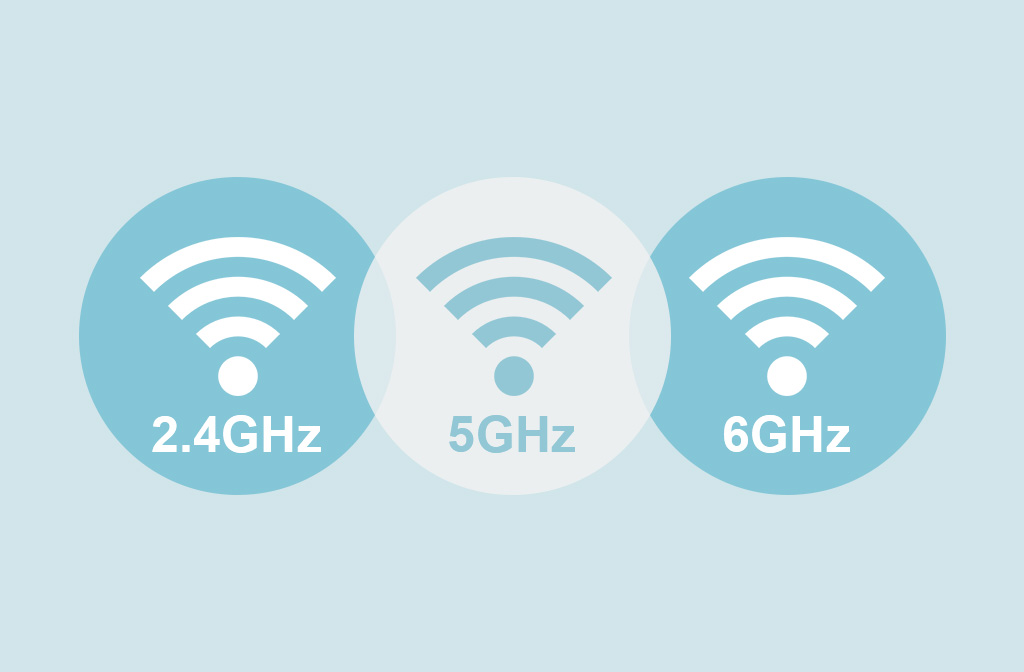Single Band, Dual Band, or Tri Band WiFi Router: Which Is Right for You in 2023?
In the rapidly evolving world of technology, choosing the right WiFi router can sometimes feel like navigating a maze of unfamiliar terms and specifications. Among the jargon that often leaves consumers scratching their heads are the labels "Single Band," "Dual Band," and "Tri Band." These labels pertain to the wireless frequency bands used by routers to transmit data between devices, and they hold the key to unlocking seamless connectivity in our increasingly digital lives. As we journey through the intricacies of WiFi routers, we'll explore the differences, advantages, and drawbacks of each category, empowering you to make an informed decision tailored to your connectivity needs in the year 2023.

What Is A Wireless frequency Band?
Before delving into the world of single, dual, and tri-band routers, let's grasp the essence of the wireless frequency landscape. A wireless band, or frequency band, is akin to the pathway for your wireless data. It's essentially those radio waves that shuttle your data from one device to another. Presently, the two prominent frequency bands are the widely-adopted 2.4 GHz and the speedier 5 GHz. However, a new contender, WiFi 6E, has burst onto the scene at 6 GHz, promising unprecedented speeds and capabilities:

l 2.4 GHz Band: Renowned for its extensive coverage, the 2.4 GHz band blankets a broader area. Nevertheless, its data transmission pace tends to be more leisurely.
l 5 GHz Band: The 5 GHz band boasts higher data speeds, making it an excellent choice for data-hungry tasks such as high-definition streaming and online gaming. However, its coverage radius is comparatively smaller.
l 6 GHz Band: The latest WiFi 6E technology introduces the 6 GHz band, which delivers lightning-fast data transmission rates. Yet, its coverage area is the most limited.
Single Band Router: Affordability with Limitations
A single-band router operates solely on the 2.4 GHz frequency band. These routers, while more budget-friendly, operate on the Wireless-N (802.11n) standard, offering speeds of up to 800 Mbps.
One of the notable advantages of the 2.4 GHz band is its superior signal coverage and its ability to penetrate walls effectively. However, it often faces congestion due to numerous devices vying for space within this frequency range. Devices like microwaves, cordless phones, baby monitors, and security cameras all contend for this spectrum, potentially leading to slower speeds and diminished signal quality.
Single-band routers shine in scenarios where expansive coverage is required, such as larger homes. If your internet activities primarily involve web browsing or emailing, and you aren't running a plethora of bandwidth-intensive applications, a single-band router can adequately fulfill your needs.
Dual Band Router:The Versatile Choice
Dual-band routers bridge the gap between multiple frequency bands by operating on both the 2.4 GHz and 5 GHz frequencies. These routers offer users two distinct access points to cater to varying connectivity requirements. The 5 GHz band stands out with its ability to achieve high speeds of up to 2,167 Mbps or even more, making it a haven for tasks such as downloading large files and indulging in seamless media streaming. In contrast, the 2.4 GHz band excels at providing a stable connection in areas farther from the router.
Many modern dual-band routers incorporate Multi-User, Multiple Input, Multiple Output (MU-MIMO) technology. This advanced feature enables routers to simultaneously connect to multiple devices, ensuring that everyone experiences a smooth and uninterrupted internet connection. Additionally, dual-band routers accommodate the latest devices, such as smartphones that thrive on the 5 GHz spectrum.
For instance, consider the WAVLINK WiFi 6 AX3000, a dual-band router that doesn't disappoint. With a total networking speed reaching approximately 2975 Mbps, it achieves an impressive 2402 Mbps on the 5 GHz band and 573 Mbps on the 2.4 GHz band. This superlative network speed makes it an ideal companion for a wide array of data-intensive tasks.
Tri-Band Router: Pioneering the Future
Tri-band routers elevate the connectivity experience by offering three distinct channels: one at 2.4 GHz and two at 5 GHz. The additional bandwidth that tri-band routers bring to the table translates into quicker and more dependable connections, all while reducing the chances of interruptions and slowdowns. Notably, certain tri-band routers are designed to support the 6 GHz band, an excellent choice for those seeking high-speed, unwavering connections.
It's worth noting that tri-band routers, despite their remarkable advantages, often command a higher price point. For the average household with standard internet usage patterns, dual-band routers are more than capable of meeting requirements. However, for individuals who are heavy internet users, managing multiple devices, or navigating bustling environments teeming with network activity,or for business users, investing in a tri-band router can be a strategic move toward seamless connectivity.
Crafting Your Decision
In the dynamic landscape of WiFi routers, the choice between single band, dual band, and tri-band routers hinges on your unique needs. For those on a budget and residing in areas with minimal interference, a single-band router could be a sensible pick. Dual-band routers, with their versatility, provide a dependable choice for many households, striking a balance between performance and price. On the other hand, tri-band routers, with their expansive bandwidth and forward-looking features, emerge as the ultimate solution for power users, businesses, and environments grappling with network congestion.
As we continue to march forward in the digital age, staying abreast of the latest technological advancements becomes increasingly crucial. By unraveling the intricacies of single, dual, and tri-band routers, you're empowered to make a well-informed decision that promises optimal connectivity for all your devices in the dynamic landscape of 2023 and beyond. Whether you're a casual internet user or a tech-savvy enthusiast, the right WiFi router can make all the difference in ensuring your digital experience is smooth, seamless, and future-ready.
Get the Scoop First
Subscribe to our official website to receive exclusive first-hand news and stay up-to-date on our new product releases and promotions!